Spring is making it’s way into summer: Is your house ready to shine with the sun? Here are 14 ways to revamp your green life:
-
Add a Small Water Feature:
 With minimal materials and effort, you can build a beautiful artesian fountain in just a few days – for a low-maintenance design and how-to, click here.
With minimal materials and effort, you can build a beautiful artesian fountain in just a few days – for a low-maintenance design and how-to, click here. -
Carve Out a Slice of Lawn for a Flower Bed
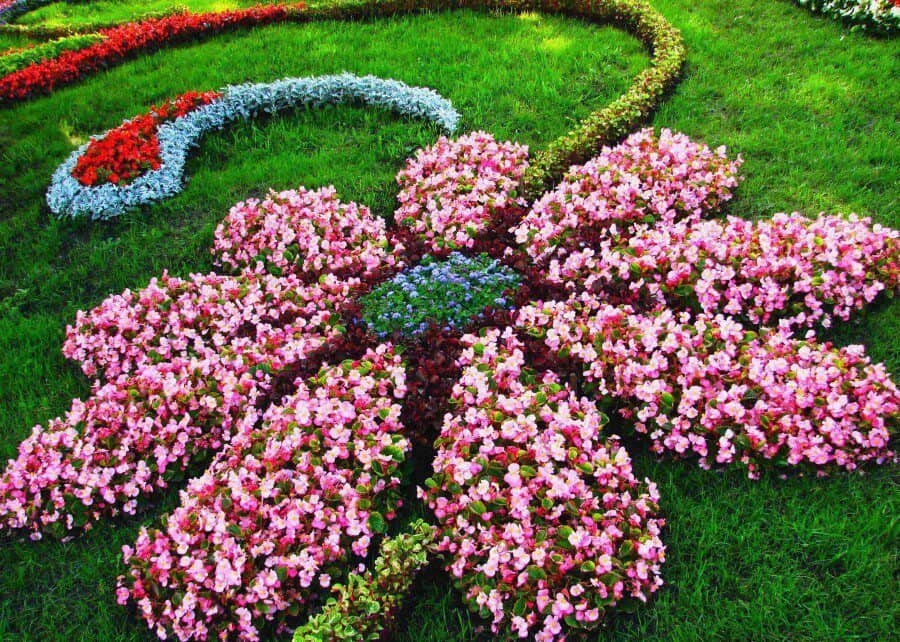
Putting in a slower bed doesn’t have to be complex or expensive. Some simple edging, good soil and colorful flowers will do! If you’re feeling fancy, try a raised garden bed.
-
Roll in a Boulder:
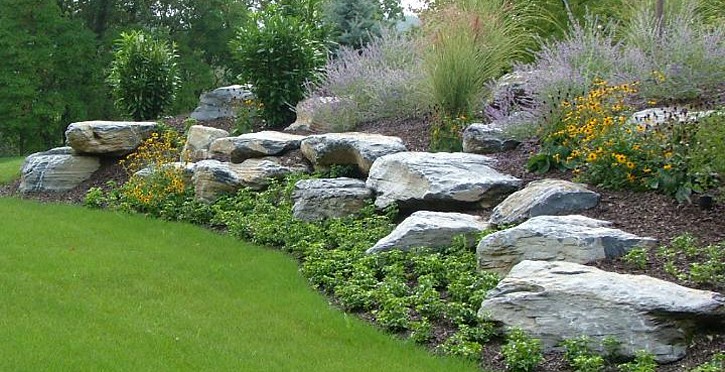 Boulders are eye-catching and provide a natural location for adding grasses, flowers and other garden plants. You’ll find huge piles of boulders to pick through anywhere that sell landscaping supplies. Prices vary with size, less for breadbox-size ones and more for giant boulders that you’ll have to have delivered and placed. Whatever sizes you choose, nest the boulder into the ground a bit. They should look like they were left from a receding glacier–not like they were just rolled off the back of a pickup!
Boulders are eye-catching and provide a natural location for adding grasses, flowers and other garden plants. You’ll find huge piles of boulders to pick through anywhere that sell landscaping supplies. Prices vary with size, less for breadbox-size ones and more for giant boulders that you’ll have to have delivered and placed. Whatever sizes you choose, nest the boulder into the ground a bit. They should look like they were left from a receding glacier–not like they were just rolled off the back of a pickup! -
Grow Self-Seeding Flowers:
 Self-seeding flowers are a real money saver for the home gardener. Buy a packet of seeds now and have flowers forevermore. The secret is to sow them where they have a chance to succeed (consult seed packets for recommendations) and then allow some of the fading flowers to go to seed. Resist deadheading–at least near the end of the season, when a new crop of seeds is needed. Some great self-seeders include rudbeckia, sunflower, cleome, zinnia, calendula, bachelor’s buttons, poppies and cosmos.
Self-seeding flowers are a real money saver for the home gardener. Buy a packet of seeds now and have flowers forevermore. The secret is to sow them where they have a chance to succeed (consult seed packets for recommendations) and then allow some of the fading flowers to go to seed. Resist deadheading–at least near the end of the season, when a new crop of seeds is needed. Some great self-seeders include rudbeckia, sunflower, cleome, zinnia, calendula, bachelor’s buttons, poppies and cosmos. -
Use Cheap Planters, but Dress Them Up:
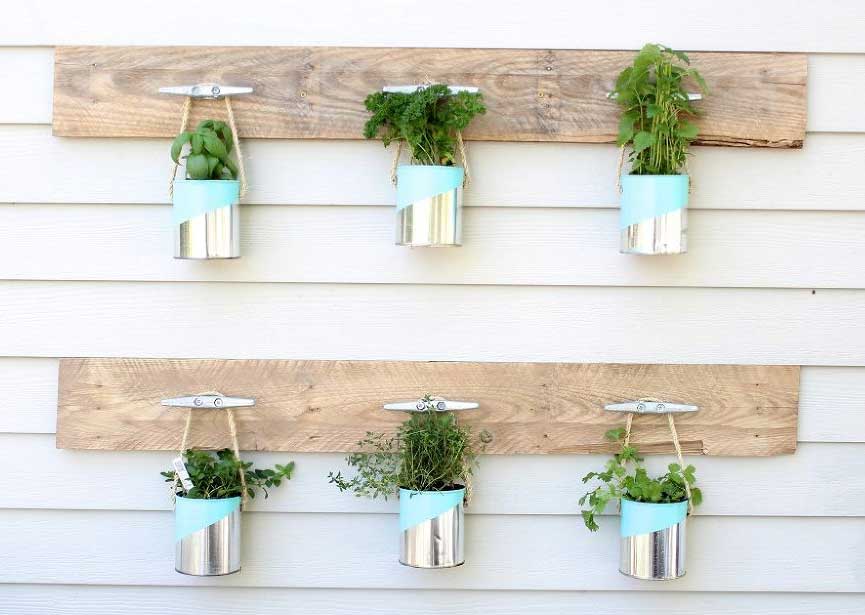 Garden twine is a useful tool for any gardener, especially as a cheap and cheerful addition to any planter. With a little hot glue and some imagination, you can create almost any look you like. Wrap an entire run-of-the-mill plastic planter with twine for an industrial look, or cover only a portion to give your decorative planters a modern edge. Twine is also easily painted, so consider adding a colorful stripe to the middle section of twine with spray paint for an extra pop of color, or group pots together with assorted colors to accent your other outdoor decor. The only limitation to any planter is to ensure that the size of the planter matches the size of the plants you want to display.
Garden twine is a useful tool for any gardener, especially as a cheap and cheerful addition to any planter. With a little hot glue and some imagination, you can create almost any look you like. Wrap an entire run-of-the-mill plastic planter with twine for an industrial look, or cover only a portion to give your decorative planters a modern edge. Twine is also easily painted, so consider adding a colorful stripe to the middle section of twine with spray paint for an extra pop of color, or group pots together with assorted colors to accent your other outdoor decor. The only limitation to any planter is to ensure that the size of the planter matches the size of the plants you want to display. -
Go with a Gravel Path:
 Adding a garden path provides interest and a place to walk through your landscape. But rather than installing an expensive concrete or paver pathway, opt for less-expensive gravel or mulch.
Adding a garden path provides interest and a place to walk through your landscape. But rather than installing an expensive concrete or paver pathway, opt for less-expensive gravel or mulch. -
Mount Small Planters on the Deck:
 In a little under an hour, you can make this simple railing mounted planter. All you need is some standard gutter parts. Get the plans for this deck planter here.
In a little under an hour, you can make this simple railing mounted planter. All you need is some standard gutter parts. Get the plans for this deck planter here. -
Build a Rustic Arbor:
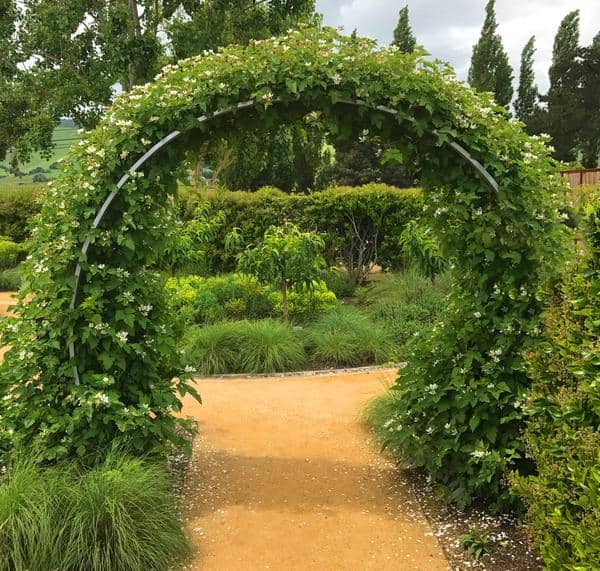 You can make a garden trellis from just $25 of steel rebar. And won’t have to weld a thing. To learn how to do this, click here. When you’re done, cover it with climbing plants for an attractive addition to your garden.
You can make a garden trellis from just $25 of steel rebar. And won’t have to weld a thing. To learn how to do this, click here. When you’re done, cover it with climbing plants for an attractive addition to your garden. -
Repurpose Containers for Starting Seeds:
 Reuse a plastic clam-shell container from the salad bar as a mini greenhouse for starting seeds in the spring. After washing the container, punch a few holes in the top. Fill the bottom with potting soil and plant your seeds. Close the lid and place the container in a sunny spot. It acts like a mini greenhouse, allowing the sun to reach the plants while holding in moisture.
Reuse a plastic clam-shell container from the salad bar as a mini greenhouse for starting seeds in the spring. After washing the container, punch a few holes in the top. Fill the bottom with potting soil and plant your seeds. Close the lid and place the container in a sunny spot. It acts like a mini greenhouse, allowing the sun to reach the plants while holding in moisture. -
Put in a Backyard Fire Pit:
 Build a fire pit for not much more than the cost of a flimsy store-bought fire ring.
Build a fire pit for not much more than the cost of a flimsy store-bought fire ring. -
Save on Potting Mix:
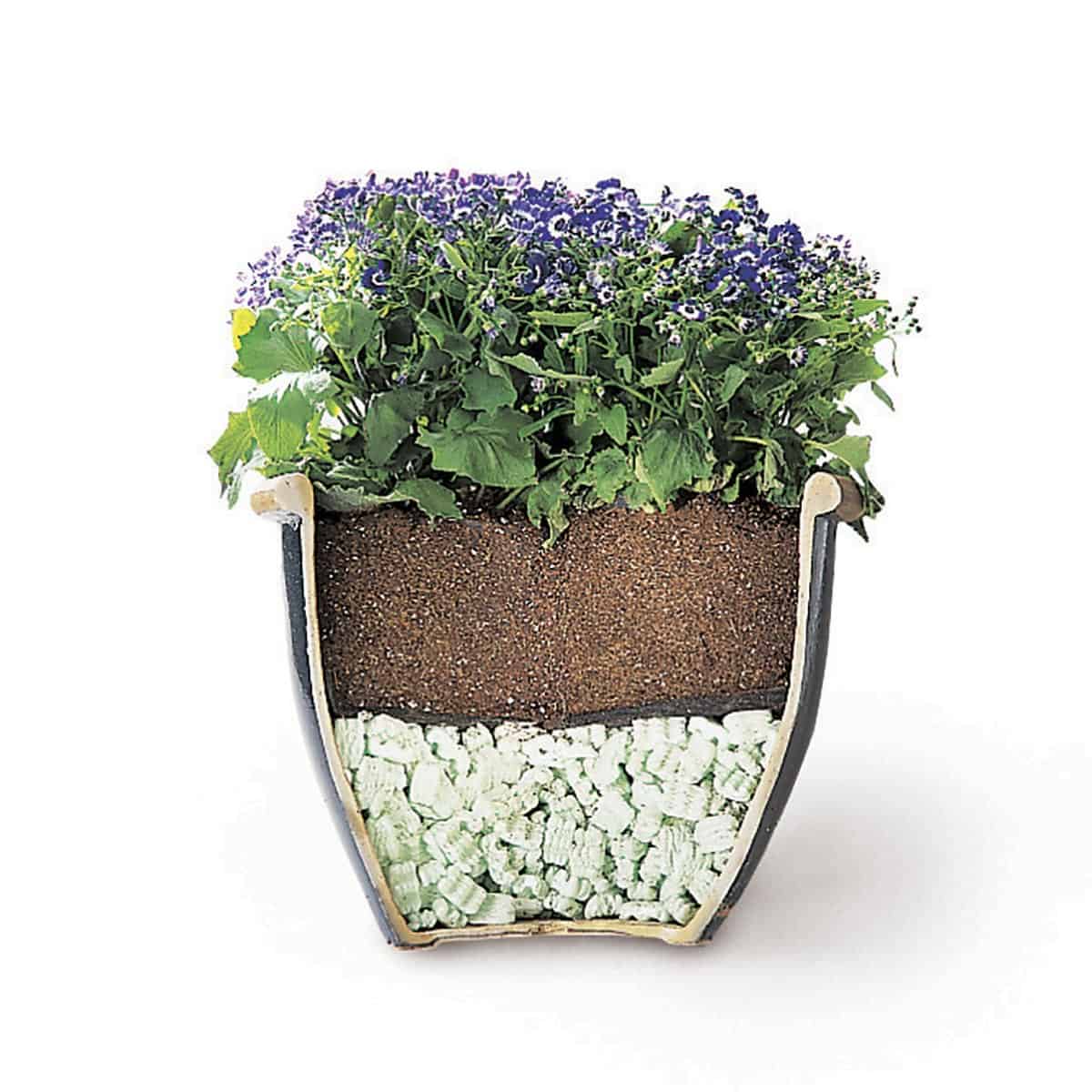 Name-brand potting mixes can set you back quite a few dollars when you’re filling large containers. Use less of the expensive soil mix (and saves weight so you can move the containers more easily) by lining the bottom of large containers with packing peanuts before filling with soil mix. Put the packing peanuts in a sealed plastic bag or cover with landscape fabric to prevent them from mingling with the soil (a hassle if you ever dump the pot).
Name-brand potting mixes can set you back quite a few dollars when you’re filling large containers. Use less of the expensive soil mix (and saves weight so you can move the containers more easily) by lining the bottom of large containers with packing peanuts before filling with soil mix. Put the packing peanuts in a sealed plastic bag or cover with landscape fabric to prevent them from mingling with the soil (a hassle if you ever dump the pot). -
Save Your Tender Bulbs:
 A lot of northern gardeners treat tender bulbs as annuals, allowing them to die at season’s end. Instead, overwinter them; to make it simpler, plant tender bulbs in containers. Then, after the frost kills the tops, whisk the containers into cool storage in a basement or attached garage. Water sparingly–maybe once a month–while they’re dormant so the soil doesn’t totally dry out–and bring the containers back out in the spring.
A lot of northern gardeners treat tender bulbs as annuals, allowing them to die at season’s end. Instead, overwinter them; to make it simpler, plant tender bulbs in containers. Then, after the frost kills the tops, whisk the containers into cool storage in a basement or attached garage. Water sparingly–maybe once a month–while they’re dormant so the soil doesn’t totally dry out–and bring the containers back out in the spring. -
Recycle Berry Containers for Lawn Care:
 When it’s time to clean out the refrigerator, be sure to save those plastic berry containers. You can toss the mushy raspberries, but wash and dry the container–it’s perfect for spreading grass seed on your lawn!
When it’s time to clean out the refrigerator, be sure to save those plastic berry containers. You can toss the mushy raspberries, but wash and dry the container–it’s perfect for spreading grass seed on your lawn! -
Make Your Own Planters:
 This 3-season planter box uses plastic containers or liners to keep moisture and dirt away from the wooden parts, meaning it will survive the outdoors a lot longer than other planters. Learn how to build the 3-season planter box here.
This 3-season planter box uses plastic containers or liners to keep moisture and dirt away from the wooden parts, meaning it will survive the outdoors a lot longer than other planters. Learn how to build the 3-season planter box here.





Leave a Reply